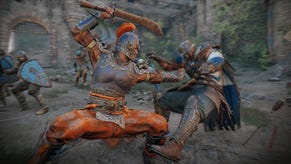Over 50% of For Honor players on PC bought the game through Steam
The Steam player base in For Honor makes up over half of the game's total population on PC.
The PC version of For Honor is available at many online stores, as a digital Uplay code. The game is also sold on Steam, but unlike Steamworks games, the keys you buy from retailers can't be redeemed on Steam.
This is known to most players on PC, of course. But what's interesting is that despite Uplay keys being more widely available, and often around 20% cheaper, Steam still had the lion share of purchases. That's according to the recent report from GitHyp.
The site tracked the game's launch numbers provided through the in-game counter, which accounts for all versions, and compared it against Steam's own player stats. On Steam alone, the game brought in 45,836 players on launch day, and 45,944 on Saturday of that weekend.
That same weekend, the in-game stats reported 83,000 online players on PC, which means around 38,000 players bought a Uplay key, through Uplay directly, or received a free copy as part of an Nvidia GTX bundle. In short, around 54% of the player base bought their copies through Steam.
This is very interesting for a number of reasons. First, Steam copies still need to launch Uplay to play, so there's technically no benefit in buying it on Steam. All versions play on the same servers and rely on the Ubisoft microtransactions store - accessible through Uplay - to purchase any additional content.
This is also a good sign that despite splintering off to create its own client and store with Uplay years ago, Ubisoft games still sell better through Steam directly - even when they're more expensive in most cases, and don't offer any additional features on Steam.
Perhaps if Ubisoft decides to show the player count in upcoming games like Ghost Recon: Wildlands, we'll able to test this theory further. Hit the GitHyp link above for the rest of the data.

















.png?width=291&height=164&fit=crop&quality=80&format=jpg&auto=webp)